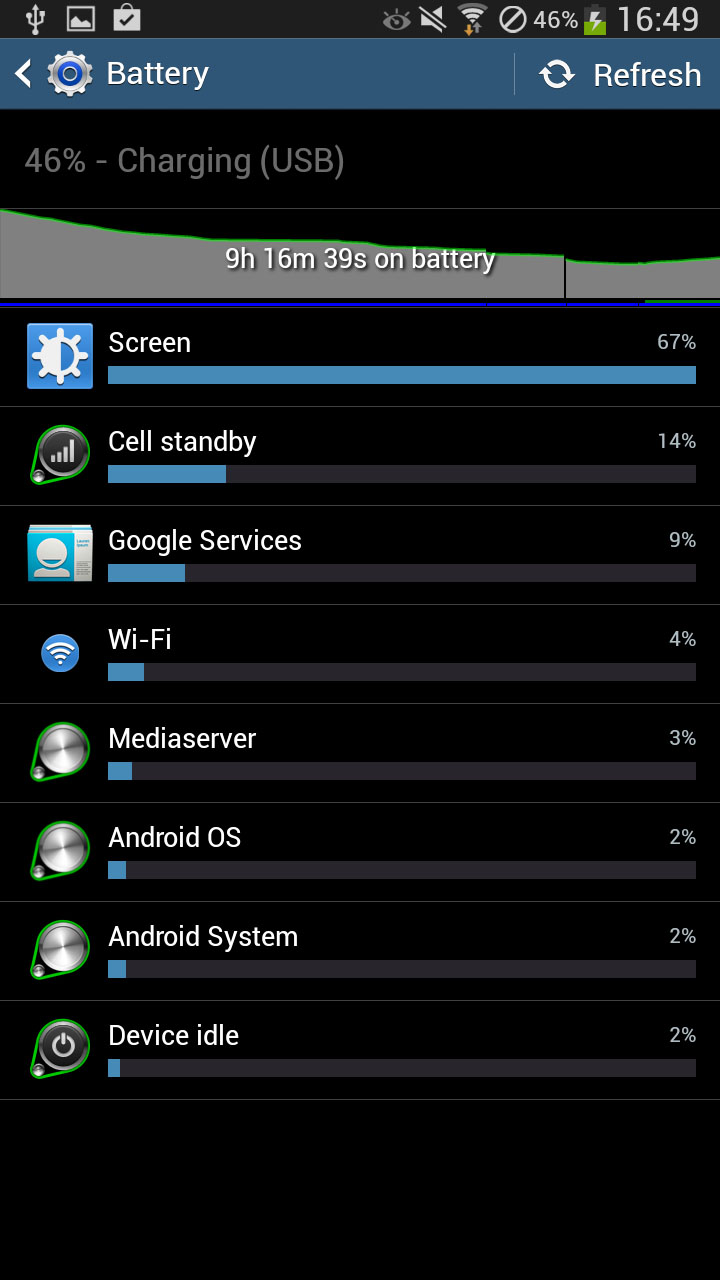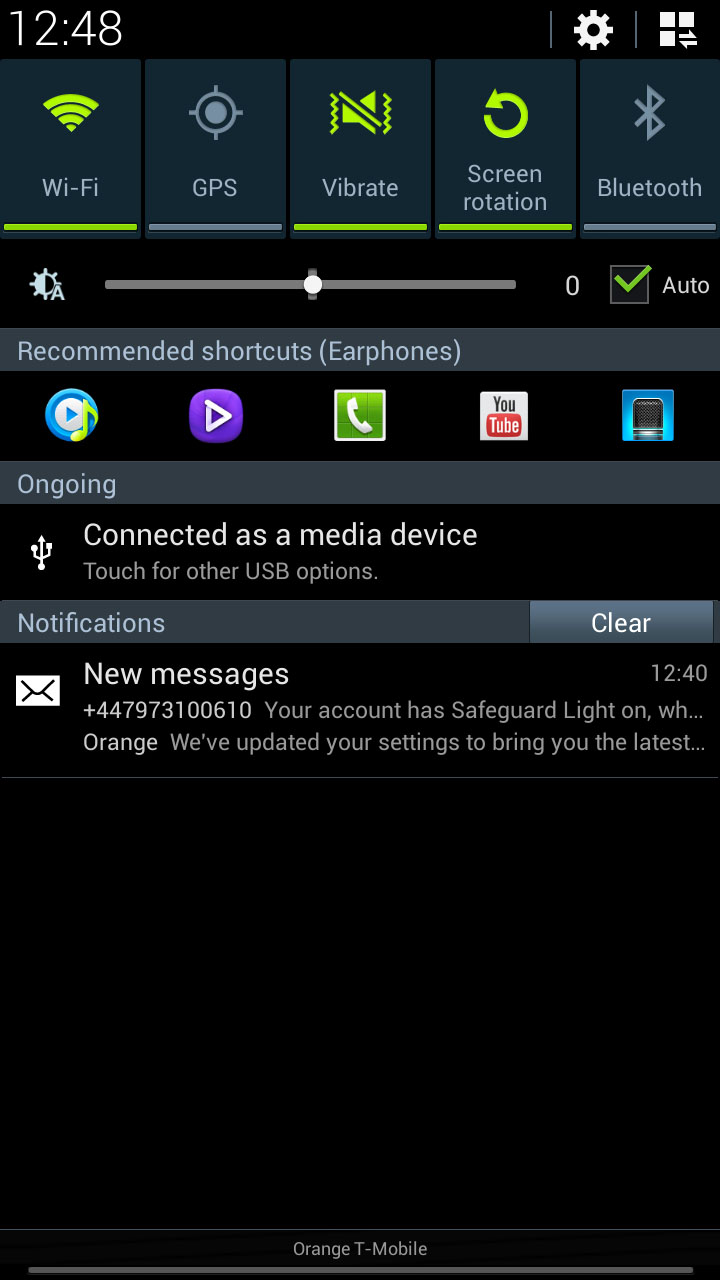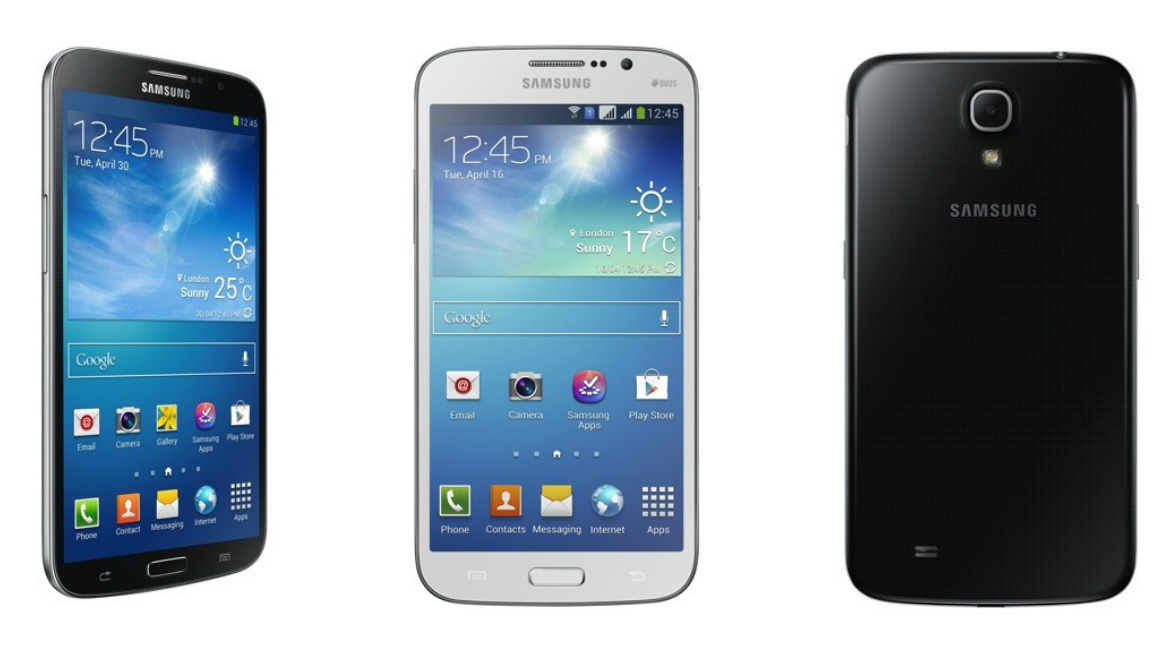Why you can trust TechRadar
Battery life
We all know that a smartphone is only as good as its weakest elements, and more often than we might like, that element is the battery that is sat underneath everything. In a review, it would be impossible to say that the Galaxy Mega was an amazing phone, if it had barely enough power in the battery to power it for ten minutes.
We use the HTC One review as our case in point, as it only achieved our coveted 5 star status after a software update addressed battery problems.

Unfortunately, this section of the review is the most subjective, with just about every user of every device using it for a different reason. This makes coming up with an accurate review to each need a lot more difficult, but in short, we feel that the 3200mAh battery is adequate, delivering enough performance to get you through the day, but don't expect much, if any left in reserve.
To an extent, having dual-core innards does tend to go some way to keeping the battery life going, as larger quad-core processors tend to be a lot more power hungry. Where the Samsung Galaxy Mega is going to lose most of its juice is the screen. You can't have 6.3 inches of screen, without putting a lot of power into keeping it going.
Within the Galaxy range, and so on the Galaxy Mega, battery life is an area that Samsung has really put a lot of thought into. The greatest example is the quick settings that sit in the notifications bar. These have been around for as long as we can remember, and really do aid battery life, giving you the ability to turn off battery draining services such as Wi-Fi and GPS when not in use.
There is also the auto-brightness feature that is sorely missed on a variety of handsets, the most noticeable being that Galaxy S3 Mini. Auto-brightness levels can even be customised on the Galaxy Mega, although not massively. It's not a feature that we ended up using all that often, but we are fans of anything that gives that added extra level of control.
As we threw the Galaxy Mega through the grind, we are able to report that it lasted what we would call a standard day. We checked our emails occasionally, sent one or two text messages to our only friend, we even popped the video player on for a bit. With the Galaxy Mega's massive screen, we did find that the battery was sapped quite considerably with videos.
Our 90 minute HD test video caused a 27% drain, so if you have a long commute and plan to watch a lot of videos, you might want to take a cable with you to work.
Connectivity
Connectivity is getting a lot better across the board, with every level of the smartphone marked getting more and more connected, with NFC now gracing even the cheapest handsets such as the Samsung Galaxy Fame.

With mid range specs, the Samsung Galaxy Mega comes with all the standard connectivity gubbins and doodads that that we have all come to expect; Wi-Fi, GPS and GLONASS, Bluetooth, NFC and even 4G LTE.
With networks pushing 4G as the future of mobile internet, equipping the Galaxy Mega with 4G technology is a massive boost. After all, what is the point in having a massive screen that is perfect for mobile web browsing, if you're not going to have mobile technology to back it up.
Wi-Fi is supported to a/b/g/n standards (as well as Wi-Fi Direct on board), and comes dual band, supporting both 24 and 5GHz technology. Bluetooth is supported to 4.0 standard. DLNA streaming is another feature that is being built into a lot of Samsung's devices, and makes another appearance on the Galaxy Mega. We mentioned the IR blaster earlier, but that turns the Galaxy Mega into a remote control.
Samsung's Group Play also makes its way over to the Galaxy Mega, unsurprising as this is a feature that Samsung is trying to push, to make their devices more sociable. As an app, it is perfectly functional, connecting to other Samsung Galaxy devices so you and your friends can turn your phones in to something that vaguely resembles a surround sound system, with music being played through all the external speakers.
As always, connection to the PC is done via a microUSB port, which also doubles itself up as the charging point, and even an MHL (11pin) port. Connected to the PC, the Galaxy Mega becomes an external drive, meaning that the usual drag and drop features on the desktop are still present.
For those that want a little more functionality, Samsung also has its proprietary KIES software, which the Galaxy Mega can connect to via the microUSB cable, or via KIES Air (if both devices are connected to the same Wi-Fi network).
